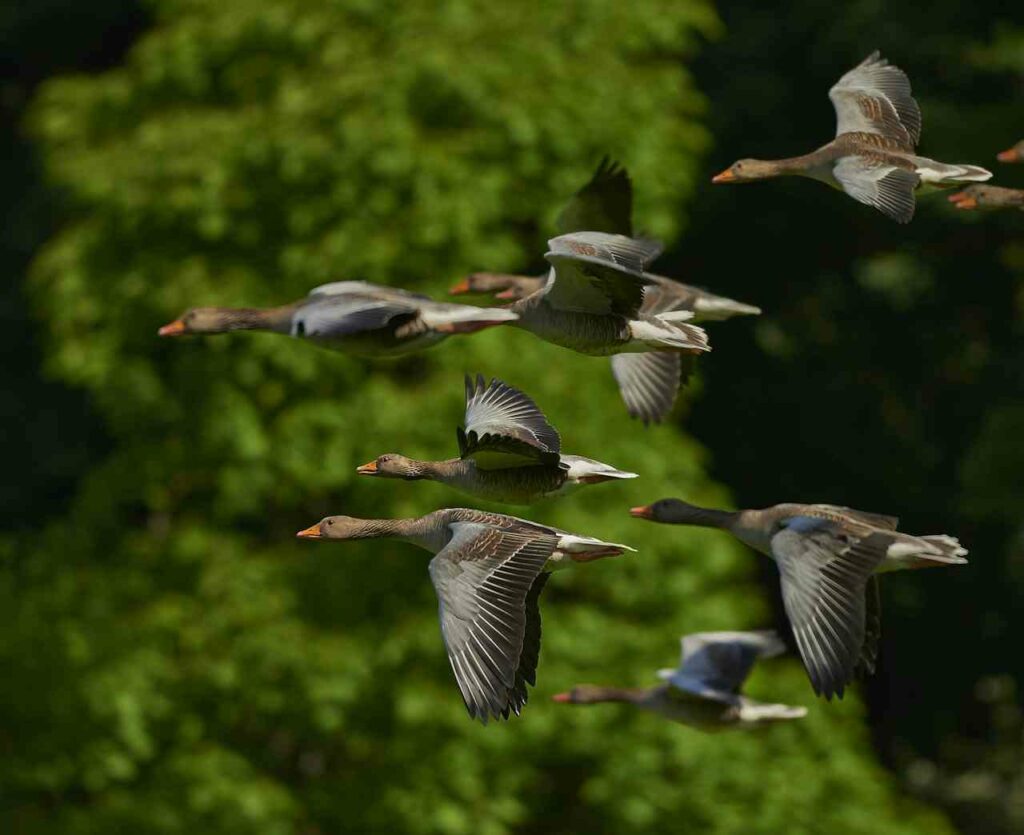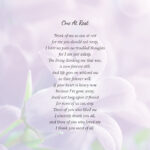The bond between humans and animals is timeless, transcending language and culture. Animals often embody qualities we hold dear—loyalty, love, and resilience—and they connect us to the natural world in profound ways. For centuries, poets have drawn inspiration from these creatures, using their imagery to explore themes of life, death, and the enduring power of memory.
During times of grief, poetry becomes a way to express emotions that feel too complex for words. Animal-themed funeral poems uniquely capture this intersection of love, loss, and nature, offering solace to those mourning the loss of a loved one—whether human or animal. Through vivid metaphors and heartfelt language, these verses remind us that even in the midst of sorrow, there is beauty and connection to be found in the world around us.
For those preparing to honour a loved one, these poems provide an opportunity to reflect on the enduring bond between humans and animals, serving as a source of comfort and inspiration in difficult times.

1. “The Rainbow Bridge” (Author Unknown)
Among the most beloved animal-themed funeral poems, “The Rainbow Bridge” paints a picture of a heavenly place where pets wait to reunite with their owners. This concept of the ‘Rainbow Bridge’ is a popular belief in pet afterlife, envisioning a bridge connecting two worlds, where the bond between humans and their cherished companions remains eternal. The poem’s comforting imagery of this radiant bridge provides a sense of hope and reassurance to those grieving the loss of a pet.
The central image of the rainbow bridge is both vivid and symbolic. It represents the connection between life and the afterlife, with the bridge acting as a passageway for beloved animals. The language is warm and uplifting, portraying pets as joyous and healthy while they wait to reunite with their owners. Themes of loyalty, love, and reunion run deeply through the poem, reinforcing the idea that relationships with our animal companions transcend physical boundaries.
The universal longing for reunion with a loved one is captured beautifully in “The Rainbow Bridge.” It validates the profound grief that comes with losing a pet while offering a hopeful perspective—one where separation is temporary and love endures. For those mourning, the poem acts as a reminder of the joy and companionship their pet brought into their lives, even as they navigate their loss.
Take a moment to reflect on the unique bond you shared with your pet. Their love, loyalty, and presence remain a part of your story, much like the unbroken connection imagined in “The Rainbow Bridge.” Consider reading these poems during a quiet moment of reflection, or sharing them with others who are also mourning. They can serve as a reminder of the enduring power of love and the beauty of life, even in times of sorrow.
2. “The Last Battle” (Author Unknown)
“The Last Battle” is a profoundly moving poem that tenderly captures the end-of-life journey of a beloved pet. It portrays the act of letting go as a final, selfless expression of love, highlighting the strength and compassion required to give a pet a peaceful farewell. The poem reassures grieving pet owners that their decision, though painful, is one of kindness and mercy.
The poem uses battle imagery to reflect the struggles faced by a pet nearing the end of its life. The “battle” is not one of conflict but of endurance—fighting through pain or the inevitability of time. The gentle conclusion, where the pet finds peace, shifts the focus to themes of compassion, love, and release. The act of saying goodbye becomes an honourable and selfless gift, offering solace to those grappling with their loss.
For pet owners, the decision to let a pet go peacefully is often one of the most challenging moments of their journey together. “The Last Battle acknowledges the weight of this decision while reframing it as an ultimate act of love. It validates the grief and provides comfort by reminding owners of the joy, love, and companionship they gave their pet throughout its life.
Reflect on the love and care you give your pet every day. “The Last Battle” reminds us that saying goodbye is never easy, but it is a testament to the depth of your bond and the strength it takes to choose peace for a beloved companion.
3. “Do Not Stand at My Grave and Weep” by Mary Elizabeth Frye
While not written explicitly about animals, Mary Elizabeth Frye’s iconic poem “Do Not Stand at My Grave and Weep” resonates deeply with those mourning the loss of both people and pets. Through its use of natural imagery, the poem encourages readers to find their loved one’s presence in the beauty of the world around them—winds, birds, and stars. This enduring connection with nature offers comfort and a sense of continuity.
The poem’s simple yet powerful lines describe how the departed become part of the natural world, present in the rustling winds, gentle rains, and shimmering stars. This imagery creates a sense of peace, suggesting that even in our absence, the spirit of a loved one remains all around us. Themes of endurance, memory, and connection make this poem particularly meaningful for those navigating grief.
The universality of Frye’s words makes them particularly poignant for pet-bereaved people. The idea that their spirit lives on in the natural world can provide a sense of comfort and closeness. It also encourages a broader view of loss—one that focuses on presence rather than absence.
As you navigate your grief, take a moment to connect with the natural world. Whether it’s the sound of the wind or the sight of a bird in flight, “Do Not Stand at My Grave and Weep” encourages us to find love and memory in the world around us.
4. “Blackberry-Picking” by Seamus Heaney (Excerpts for Reflection)
Seamus Heaney’s “Blackberry-Picking” reflects on the beauty and impermanence of life through vivid natural imagery, including birds and seasonal changes. While not directly about animals, the poem’s exploration of life’s fleeting nature makes it a fitting choice for those seeking solace in the cycles of the natural world.
Heaney uses the act of picking blackberries as a metaphor for the passage of time and the bittersweet nature of impermanence. Birds appear in the poem as part of the harvest’s lifecycle, adding a layer of connection to the animal world. Themes of change, memory, and the beauty of transience run through the verses, inviting readers to reflect on the impermanence of life and the lasting impact of memories.
The poem’s reflection on nature’s cycles can help mourners connect their loved one’s life to the broader rhythms of the world. It offers a reminder that even as life changes, the beauty of what was remains with us.
Please take comfort in the natural cycles of life and the reminders of beauty they bring. Heaney’s words encourage us to embrace the impermanence of life while treasuring the love and memories that endure.

5. “The Eagle” by Alfred Lord Tennyson
Alfred Lord Tennyson’s “The Eagle” celebrates strength, majesty, and freedom through the image of a soaring eagle. While the poem does not directly address themes of loss, its vivid portrayal of the eagle can serve as a fitting tribute for someone with a bold or free-spirited personality. The eagle becomes a symbol of resilience and independence, making it an inspiring choice for honouring a loved one.
The poem’s language is striking, with phrases like “he clasps the crag with crooked hands” and “ring’d with the azure world.” These images evoke a sense of awe, portraying the eagle as a powerful and untamed force in the natural world. Themes of strength, freedom, and dignity permeate the poem, offering a reminder of the unique qualities that make each individual unforgettable.
For those mourning a loved one who embodied similar qualities—courage, independence, and vitality—“The Eagle”serves as a powerful reflection of their spirit. It offers comfort by framing their life as extraordinary, full of strength and grace.
Reflect on your loved one’s strength and individuality. Tennyson’s “The Eagle” encourages us to remember them as vibrant and resilient, like the eagle soaring high in the sky.
6. “A Dog Has Died” by Pablo Neruda
Pablo Neruda’s heartfelt poem “A Dog Has Died” captures the profound bond between humans and their pets, blending humour, tenderness, and deep emotion. Through simple yet poignant language, Neruda celebrates his dog’s unique spirit and the unconditional love they shared, making this poem deeply relatable for anyone grieving the loss of a pet.
The poem uses everyday language and vivid descriptions to paint a picture of the dog’s personality and their life together. Neruda reflects on the loyalty and joy his dog brought into his life, balancing moments of sadness with gratitude. Themes of companionship, love, and remembrance are central, offering a perspective that celebrates the pet’s life rather than focusing solely on the loss.
“A Dog Has Died” validates the depth of grief that accompanies the loss of a pet while also celebrating the happiness they brought. It reminds readers that their bond was meaningful and unique, leaving an enduring impact.
Take a moment to honour your pet’s individuality. Neruda’s words remind us that the joy and love they gave will always remain a part of our lives.
7. “Wild Geese” by Mary Oliver
Mary Oliver’s “Wild Geese” is a reflective and comforting poem that uses the imagery of geese in flight to explore themes of belonging, renewal, and healing. It speaks directly to the heart, reminding readers of their connection to the natural world and encouraging them to find solace in its rhythms during times of grief.
The wild geese become a metaphor for resilience and unity, moving together as a reminder of life’s continuity. The poem’s gentle language creates a sense of calm, inviting readers to reflect on their place within the larger tapestry of existence. Themes of renewal, acceptance, and healing through nature run throughout, offering hope to those navigating loss.

Oliver’s message of self-compassion and interconnectedness is deeply comforting, particularly for those feeling isolated in their grief. The imagery of the geese suggests that even in sorrow, we remain part of something greater, with the natural world offering a steady source of comfort.
Let the words of “Wild Geese” remind you that grief is a part of life’s journey and that renewal and comfort can be found in nature’s embrace.
8. “I Am a Thousand Winds” (Traditional, Inspired by Mary Elizabeth Frye)
This traditional poem, often inspired by Mary Elizabeth Frye’s “Do Not Stand at My Grave and Weep,” uses the imagery of winds, birds, and nature to evoke the idea of a loved one’s presence being woven into the fabric of the natural world. It offers reassurance that while they may be physically gone, their spirit remains ever-present.
The poem uses symbols like the wind, the quiet of morning, and birdsong to convey an enduring connection. These natural elements become metaphors for the loved one’s spirit, suggesting that their love and memory continue to surround us. Themes of eternal connection, presence, and peace are central to its comforting message.
For those grieving, this poem offers a way to feel close to their loved ones by finding them in the world around them. The idea that they are part of the air we breathe and the beauty we see can bring a profound sense of comfort.
Let the words of “I Am a Thousand Winds” guide you to find your loved one’s spirit in the world around you. Their memory lives on in the whispers of the wind and the beauty of the natural world.
9. “The Peace of Wild Things” by Wendell Berry
Wendell Berry’s “The Peace of Wild Things” is a reflective poem that invites readers to find solace in the presence of nature, particularly in the quiet company of wild animals. It offers a way to step outside the pain of grief and connect with the serenity of the natural world, reminding us that peace can be found even in the most difficult times.
The poem vividly depicts calm moments spent with nature—the stillness of a heron on the water and the quietness of wild surroundings. These images serve as a metaphor for the healing power of the natural world, where the complexities of human grief are replaced by the simplicity and tranquility of wildlife. Themes of renewal, healing, and finding comfort in the present moment are woven throughout the verses.
Berry’s poem offers a sense of grounding for those navigating the emotional turbulence of loss. Focusing on the stillness and simplicity of nature provides a way to momentarily escape grief and find clarity and peace. The poem’s gentle tone reminds readers that solace is often found in the quiet presence of the natural world.
Take a moment to step outside, breathe deeply, and let nature’s quiet presence surround you. Berry encourages us to find peace and renewal in the beauty of the wild.
10. “The Owl and the Pussycat” by Edward Lear
Edward Lear’s whimsical poem “The Owl and the Pussycat” offers a lighthearted and joyful perspective, making it an unexpected yet fitting choice for those who want to celebrate the life and love shared with a departed loved one. Its playful tone and unique pairing of animals reflect themes of companionship, adventure, and enduring affection.
The poem’s charming depiction of an owl and a cat embarking on a fantastical journey together captures the innocence and joy of a shared bond. Themes of love, friendship, and happiness shine through its playful rhymes and colourful imagery. While it doesn’t directly address loss, the poem can serve as a reminder of the happy memories and love that remain after someone’s passing.
This poem offers a refreshing perspective for readers who want to celebrate a loved one’s personality or their connection to storytelling and imagination. Its whimsical nature provides a moment of levity, encouraging readers to focus on the joy and love shared with the departed.
Celebrate the happiness and light your loved one brought into your life. Lear’s “The Owl and the Pussycat” reminds us that love and laughter remain a part of our story, even in times of loss.
Conclusion
The timeless connection between humans, animals, and nature reminds us of the enduring beauty of life, even in the face of grief. These ten animal-themed funeral poems offer a unique way to honour the memory of a loved one, combining heartfelt imagery and themes of love, resilience, and renewal to bring comfort and reflection.
Whether it’s the vision of a beloved pet waiting at the Rainbow Bridge, the strength of an eagle soaring high, or the peace found in the presence of wild things, each poem speaks to the unbreakable bonds that connect us to those we’ve lost. They remind us that even as we grieve, the love and memories we share endure, woven into the fabric of the natural world.
Take a moment to explore these poems and find the ones that resonate most deeply with you. Whether you’re seeking solace, celebrating a unique spirit, or reflecting on the enduring beauty of life, these verses can offer comfort and healing during a difficult time.






